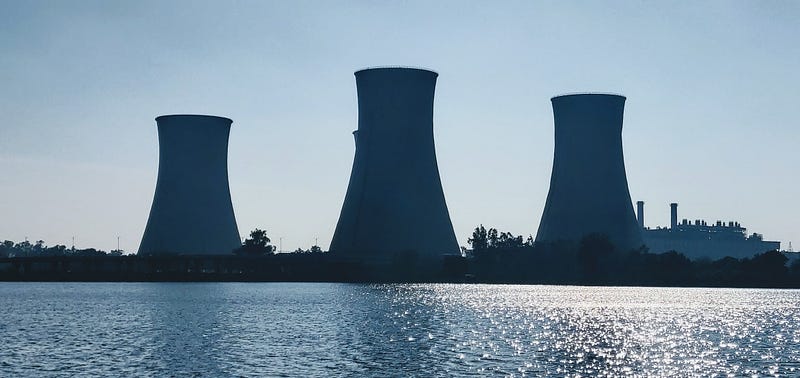Harnessing the Power of the Atom: A Sustainable Future
Written on
The Quest for Energy Solutions
Energy serves as the backbone of modern civilization, prompting an enduring quest for efficient and sustainable power sources. Today, the predominant energy options include fossil fuels (coal, oil, and natural gas), renewable sources (solar, wind, and hydroelectric power), and nuclear energy. Each of these sources possesses unique characteristics regarding energy density, which indicates the energy contained within a specific mass or volume.
Fossil Fuels: The Dominant Power Source
Fossil fuels currently reign as the most utilized energy sources for electricity generation, largely due to their affordability and abundance. These fuels derive from the decomposed remnants of ancient flora and fauna, subjected to immense pressure over millions of years. The combustion of fossil fuels releases stored energy in the form of heat, which is then converted into steam to drive turbines. However, the energy density of these fuels is not uniform across types.
Among fossil fuels, coal is the most prevalent for electricity production, boasting an energy density of approximately 24–29 megajoules per kilogram (MJ/kg). In comparison, oil and natural gas present higher energy densities, around 48–49 MJ/kg and 55–56 MJ/kg, respectively. Despite their high energy content, fossil fuels are finite resources, and their extraction and combustion significantly contribute to greenhouse gas emissions, exacerbating climate change.

Renewable Energy: A Cleaner Alternative
The shift towards renewable energy sources is gaining momentum due to their environmentally friendly and sustainable nature. These sources, including solar, wind, and hydroelectric power, harness natural elements to produce electricity. However, their energy densities are generally lower than those of fossil fuels.
For instance, solar energy achieves an energy density of around 1.5 kilowatt-hours per square meter per day (kWh/m²/day), influenced by geographical location, time, and weather. Wind energy varies between 1–2 watts per square meter (W/m²), contingent on wind speed and turbine performance. Hydroelectric power ranges from 0.2–10 kilowatts per square meter (kW/m²), depending on dam size and water flow rate.
While renewable sources are advantageous for their cleanliness and sustainability, their relatively low energy densities necessitate extensive land use for significant power generation. Additionally, their output can be unpredictable due to environmental factors, unlike the more consistent nature of fossil fuels.
The Nuclear Advantage
In contrast, nuclear energy exhibits a significantly higher energy density compared to both fossil fuels and renewables. It is generated through the process of nuclear fission, where atomic nuclei are split, releasing vast amounts of energy. The energy density of nuclear fuel is approximately one million times greater than that of fossil fuels, enabling nuclear plants to generate substantial electricity from minimal fuel.
Moreover, nuclear power is a clean energy source, producing no harmful emissions during operation. The industry has made notable advancements in safety and waste management, with modern reactors designed for long-term efficiency and safety.

Challenges and Considerations
Despite its advantages, nuclear energy faces significant public apprehension due to safety concerns and nuclear waste management. Notable incidents such as those at Three Mile Island, Chernobyl, and Fukushima have raised awareness of the potential hazards associated with nuclear power. Furthermore, the absence of a universally accepted solution for long-term nuclear waste storage remains a pressing issue.
“All the waste in a year from a nuclear power plant can be stored under a desk.” — Ronald Reagan
Nonetheless, nuclear energy continues to present a compelling option for sustainable power generation. Its high energy density allows for compact and efficient plants that can reliably produce large amounts of energy. Innovations like small modular reactors (SMRs) and advanced nuclear technologies promise enhanced safety and flexibility in energy production.
The Future of Energy: A Balanced Approach
In summary, the varying energy densities of common fuel sources significantly influence their efficiency, sustainability, and environmental impact. While fossil fuels offer high energy densities, they are non-renewable and contribute to climate change. Renewable sources, although clean and sustainable, struggle with low energy densities and environmental dependency. Nuclear energy stands out with its superior energy density and minimal emissions, making it a viable candidate for clean energy generation. With ongoing innovation and investment, nuclear power could play a crucial role in addressing the world’s energy needs.
The first video, #103: The Nuclear Option, delves into the intricacies of nuclear energy, exploring its advantages and challenges in the modern energy landscape.
The second video, 171 - The NUCLEAR Option, provides further insights into nuclear energy's potential and its role in sustainable power generation.
If you found this article informative, consider following me on Medium for more insights into the future of science and energy.